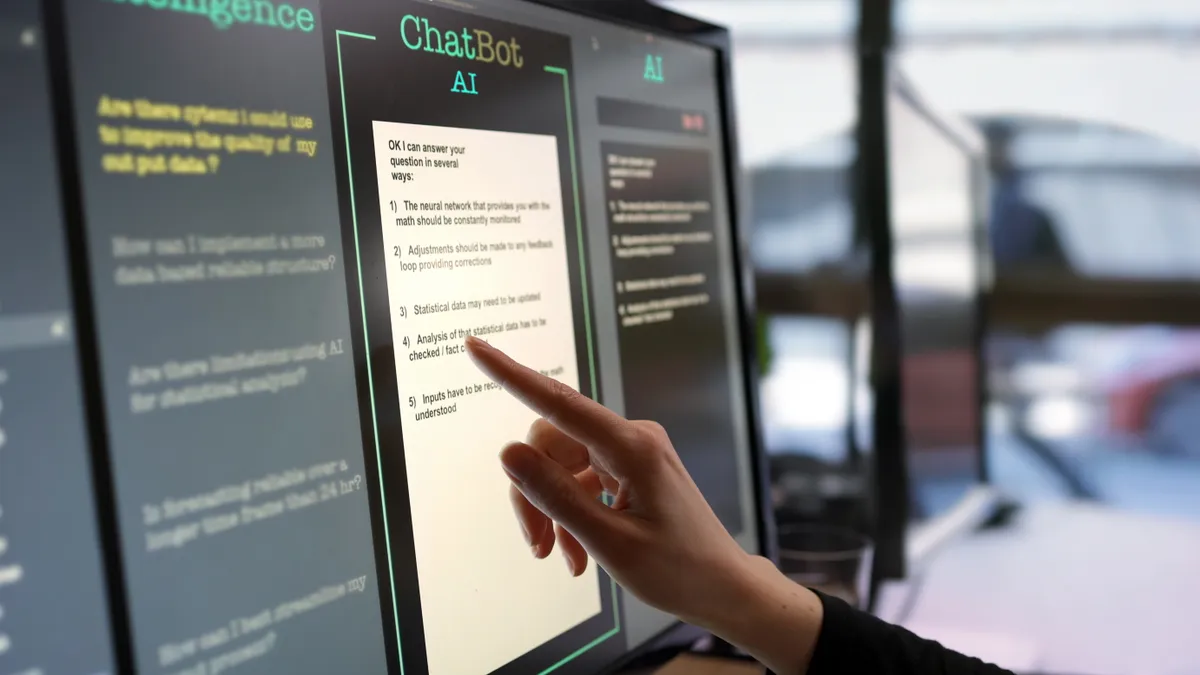The pandemic and ongoing digital transformation efforts have driven more businesses to adopt intelligent virtual assistants to ease the pressure on customer service and support.
The popularity of contact center intelligent virtual assistants shows no signs of abating. In 2022, Gartner projected that 1 in 10 agent interactions would be automated by 2026 through voice, chatbots and digital channels.
Now with new generative AI tools, there’s a renewed push for efficiencies and improving customer engagement, but without employee buy-in and a strategy built on robust metrics, it could fall short of expectations.
For employees, new terminology for AI technology can present a barrier to adoption, according to a report by analyst firm Valoir. It found terms such as “co-pilot” don’t positively resonate, whereas “virtual assistant” is viewed more favorably.
Building trust is a key factor for effective adoption with individual users, the report noted. This entails clearly outlining policies and practices, and providing role-based explanations of the benefits.
Information systems business Wipro, which has a strong presence across North America, has adopted intelligent virtual assistants backed by AI in its enterprise chat application, for employee queries, and within its service portal.
Almost the entire workforce is using them to handle queries, automate tasks, such as onboarding, and improve access to information. It has helped lower costs, freed up staff capacity and reduced navigations to legacy apps, according to Kanchan Ganorkar, head of platforms at Wipro.
“Our chatbot’s a one-stop shop that’s helped resolve 6.5 million employee queries and automated 1.2 million tasks over the last 15 months, and it can usually respond in six seconds,” Ganorkar said.
Fostering adoption
To reduce risk and build trust in its virtual assistants, Wipro has adopted a range of safeguards, such as strict permissions and active monitoring.
“Monitoring tools help detect any performance issues and course correct immediately,” Ganorkar said.
Role-based access controls, masking and encryption algorithms prevent data leaks between employees, functions, customers and partners. Wipro has also been careful to integrate human oversight within the tools.
“Content upkeep has been woven into daily checks to ensure the integrity of our data and we have loop backs to human agents where it may be needed in certain scenarios,” she said.
To help secure employee buy-in, measurable outcomes need to guide initiatives, according to Ram Menon, CEO and co-founder of Avaamo, whose AI agent technology has been adopted by Wipro. It starts by identifying the workflow or process that needs to be streamlined and then attaching well-defined CX metrics
“It may feel like ‘new tech’ requires new KPIs, but it should impact the same metrics you cared about before AI,” Menon said in a statement.
This includes metrics such as employee hours saved, employee queries resolved, or employee NPS scores so that any new investment transcends novel tech adoption.
“Focus on the KPIs that drive the business forward, not AI-specific metrics that don’t actually measure what you need,” he said.
Navigating the risks and pitfalls
While the benefits of intelligent virtual assistants are compelling, organizations risk wasting their investment and not securing employee buy-in if they fail to adopt a measured approach and organize internal systems, according to Gartner.
This includes allocating sufficient resources to support proper data integration and features such as natural language understanding. Each particular call flow needs to be built out and then fine-tuned for improvements, the research firm said.
“Implementing virtual assistants just to automate tasks won’t improve customer journeys or the employee experience,” said Samy Zachary, solution development architect at CX consultancy Alorica.
Businesses need to use historical data to identify customer pain points to develop clear business objectives and help employees understand the desired outcomes, according to Zachary.
However, given that AI is rapidly developing, investing heavily risks newer innovations quickly superseding adopted systems.
The role of humans can’t be overlooked, either. With any platform, context and conversational exchanges are needed to train the models for suitable responses, which includes striking the right tone.
“If it leads to insensitive responses not aligned with the brand’s values, it can cause reputational damage,” he said.
Organizations want to avoid over-relying on AI and downplaying the importance of their employees, who need to be part of the process to help the models learn and respond to customers when their queries warrant it.
“It’s vital to set boundaries on responses and know when to appropriately transfer to a CX agent,” he said.
Correction: A previous version of this article used the incorrect pronoun for a source. It has since been updated. This article has also been updated to reflect what technology from Avaamo Wipro uses.

















